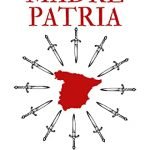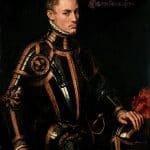
Contents
Spanish reporter without borders for North America
Cabeza de Vaca recounted the adventures and misfortunes that he and his three companions went through for almost 3 long years in the territories that are now the United States of America. An exhausting journey, which he managed to survive after long sufferings.
+ Hispanic Roots
The first reporter without borders
For 300 years the Spanish toured North America. Cabeza de Vaca, became the first reporter to write his experiences. In his writings he describes who were the indigenous tribes that he met, their customs and way of life.
Based on a long drive from Florida to Mexico
He described to us what Indian tribes existed, what customs they had, what utensils they used, their religion, their livelihoods, etc. In his tour as the first Spanish reporter by necessity, he saw villages of the Seminole Indians in the Florida area
Why was a Hispanic the First?
The first reporter in the U.S., by necessity
The Story of Alvar Núñez Cabeza de Vaca revealed the life and customs of the indigenous people in detail. A journalist out of necessity he recounted all his deprivations.
A long and very hard journey, for years, throughout the South of the United States. He started it on the Florida Peninsula, Alabama, Louisiana, Mississippi, Texas, New Mexico, California, along the Pacific Coast, etc. until reaching the current Mexico
He traveled from the year 1527 to 1535
The story of the adventures and misfortunes that he and his three companions went through for almost 8 long years in the territories that today are the southern United States of America, later made him a reporter.
Participant and survivor in Pánfilo de Narváez’s expedition to Florida, he detailed the life, customs and beliefs of the indigenous people of the territories he crossed.
Reporter for Florida
Although at that time Florida the Spaniards called the territory between the Labrador Peninsula (Canada) and the current Florida peninsula.
His route was between this peninsula and the Rio Bravo or de las Palmas (Mexico)
Núñez traveled the northern Gulf of Mexico, a huge unknown area pending exploration
During this long trip he met a large number of indigenous tribes, some of them already disappeared such as: Timicuas, Seminolas, Appalachians, Muscogis, Alabamas, Tunicas, Caddo, Carancavas, Sioux, Natchez, Apaches, Comanches, Navajos, Shoshones, Mimbreños, Pueblos, Uto-Aztecas, Toncavas, Atacapas, Washas, Carancauas, etc.
The route of the journey

He traveled an enormous distance east and lived with the indigenous people knowing their customs that he later related as a journalist by vocation
Tribal life
He describes the indigenous some of whose tribes have already disappeared today. He details both the small and the most powerful tribes
He met many tribes, some very powerful of which today only a few individuals remain, and others have disappeared.
Some of these tribes knew them and lived in their villages. Others such as the Apaches, Navajos or Comanches, being rather nomadic, were known to traverse their route throughout the Southeast, South and North of New Spain. He describes the breeds, some of medium size to others of high size for the time (1,70).
Ethnographic Account of the inhabitants of the places visited and their homes. Small towns or cities like those of the Pueblo Indians
He describes the utensils, tools and weapons they used. While some were made of stone, in others they used the bones of animals. He recounts his surprise upon discovering the huddled houses of the Pueblo Indians that look like fortifications.
Some were collectors of mollusks, others practiced agriculture with corn, beans and squash in an incipient way. He also met those who were primarily hunters and fishermen.
Social life of the tribes
A group of clans made a tribe
He describes how society is basically a matriarchy. Women with few children due to high infant mortality due to harsh living conditions.
In some areas, the elderly and the sick are considered a burden and are left to their own devices or even killed.
He was surprised to discover that there were men who played women and even dressed the same. He called them amadores and some of them were covered up like women.
Myths and Beliefs
Bearded men from heaven and the power of spirits
Instead of a superior being, there are multitudes of spirits that show their power, in the waters, rays, stones, winds, trees, animals etc.
This reporter by accident shows us that among the indigenous myths he finds the history of bearded men who comes from heaven. Especially one of them, who is sometimes cruel.
This myth sometimes saves their lives, but at other times it hurts them since they call the man “Bad Thing”.
The burials of the dead are sometimes in platforms as in the Indians of the prairies, others are in pits or burial mounds. They mourn the death of the loved one for a year. They cry at dawn at noon and at dusk.
Ornaments and tattoos
Variety of paintings, feathers, bracelets and necklaces. Some were to protect themselves from the insects of there is the Red Skin
Among the favorite colors to paint red, black and yellow. Tattoos and colors often depend on the clan or tribe to which they belong.
Near the Gulf of Mexico, they were scantily dressed on some occasions closer to nudity but totally on many occasions. In the inland areas in the prairies where the bison were, skins were used for clothing.


